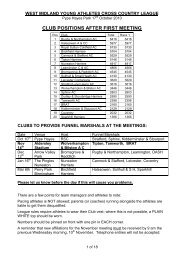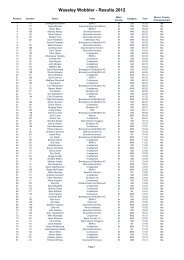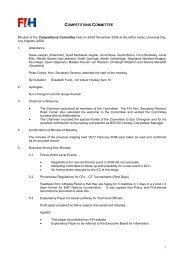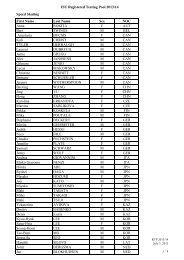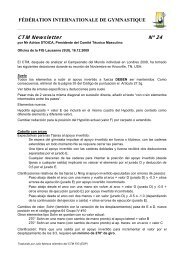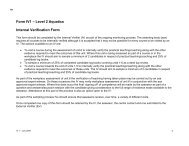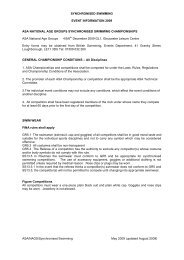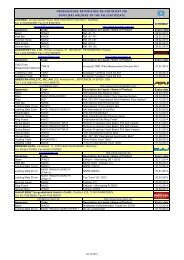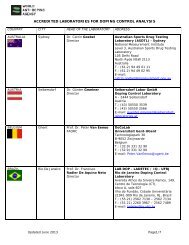paralympics gb staff - sportcentric
paralympics gb staff - sportcentric
paralympics gb staff - sportcentric
You also want an ePaper? Increase the reach of your titles
YUMPU automatically turns print PDFs into web optimized ePapers that Google loves.
LAYMAN’S GUIDE TO CLASSIFICATIONS<br />
Swimming is the only sport that combines the conditions of limb loss, cerebral palsy (coordination and movement<br />
restrictions), spinal cord injury (weakness or paralysis involving any combination of the limbs) and other disabilities<br />
(such as Dwarfism (little people); major joint restriction conditions) across classes.<br />
Classes 1-10 - are allocated to swimmers with a physical disability<br />
Classes 11-13 - are allocated to swimmers with a visual disability<br />
Class 14 - is allocated to swimmers with an intellectual disability<br />
The Prefix S to the class denotes the class for freestyle, backstroke and butterfly<br />
The Prefix SB to the class denotes the class for breaststroke<br />
The Prefix SM to the class denotes the class for individual medley<br />
The range is from the swimmers with severe disability (S1, SB1, SM1) to those with the minimal disability<br />
(S10, SB9, SM10)<br />
In any one class some swimmers may start with a dive or in the water depending on their condition.<br />
This is factored in when classifying the athlete.<br />
The examples are only a guide - some conditions not mentioned may also fit the following classes.<br />
FUNCTIONAL CLASSIFICATION SYSTEM<br />
S1 SB1 SM1 - Swimmers in this class would usually be wheelchair bound and may be dependent on others for their<br />
every day needs. Examples: Swimmers with very severe coordination problems in four limbs or have no use of their legs,<br />
trunk, hands and minimal use of their shoulders only. Usually only swim on their back.<br />
S2 .SB1 SM2 - Examples: Swimmer able to use their arms with no use of their hands, legs or trunk or have severe<br />
co-ordination problems in 4 limbs.<br />
S3 SB2 SM3 - Examples: Swimmers with reasonable arm strokes but no use of their legs or trunk; swimmers with severe<br />
coordination problems in all limbs and swimmers with severe limb loss to four limbs.<br />
S4 SB3 SM4 - Examples: Swimmers who use their arms and have minimal weakness in their hands but have no use of<br />
their trunk or legs; swimmers with coordination problems affecting all limbs but predominantly in the legs; swimmers<br />
with limb loss to 3 limbs.<br />
S5 SB4 SM5 - Examples: Swimmers with full use of their arms and hands but no trunk or leg muscles; swimmers with<br />
coordination problems;<br />
20



